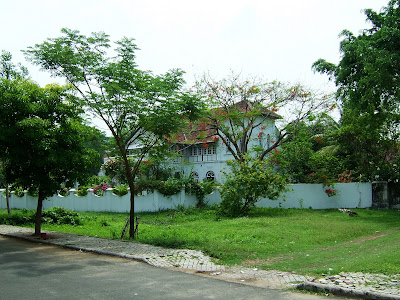Location: Cochin (Kochi), Kerala
Built In: 1555, renovated in 1663 by the Dutch
Built By: Portuguese built it and then presented it to the Maharaja of Kochi
How to Reach: Mattancherry Palace can be easily reached from anywhere in Cochin as it well connected by a network of roads.
Located at a distance of 10 kilometers from Ernakulam city, Cochin, Mattancherry Palace is a storehouse of ancient paintings and art forms. The Mattancherry Palace came to be known as the Dutch Palace after the Dutch carried out some renovation and extension work. This palace was built by the Portuguese in 1555 A.D. and was then given as a present to the Maharaja of Kochi, Veera Kerala Varma. This palace of Kerala has now been converted into an art gallery showcasing some of the best paintings and murals of Hindu mythology. Read about Mattancherry Palace, which is an important monument in south India.
Two arches built in Portuguese style form the entrance of the palace compound. The rooms on the upper level of the palace can be reached through a flight of stairs located on the south of the entrance. The palace has a central courtyard that is typical of Kerala architectural style. This central courtyard is known as "Nalukettus". The palace has the architectural style of the Portuguese though it follows the design pattern of Kerala temple architecture. This is indicated in features like sloping tiled roof and wooden balconies.
A small temple is located inside the inner court that is dedicated to Goddess Pazhayannur Bhagavati, who is supposed to be the protector of the royal family of Kochi. There are temples dedicated to Lord Krishna and Lord Shiva on either sides of the palace. The interior of the palace is decorated beautifully with royal possessions like ceremonial robes, headgear, weapons, palanquins and royal furniture. There are stunning murals depicting scenes from the Puranas, Ramayana and Mahabharata adorning the walls of the palace.
The royal bedchamber known as "Palliyara" is located at the left of the entrance. It is famous for its low wooden ceiling and the walls that are covered with some 48 paintings depicting the Ramayana. These paintings date back to the 16th century and are preserved with much care till date. There are also paintings depicting "Krishna Lila" and other instances from the life of Lord Krishna. One can also see paintings that depict the famous works of literary geniuses like Kalidasa.

